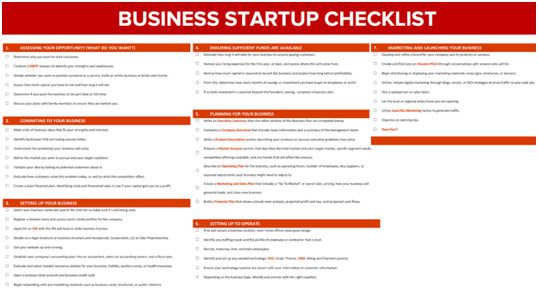Checklists
The four key components of Strategy Analysis are principles, practices, techniques, and skills. They play an essential role in identifying and validating the organization’s strategic needs, defining suitable solution approach(es) and solution(s), and planning, monitoring, and engaging stakeholders to achieve the organization’s strategic objectives. Techniques describe a step-by-step approach to conducting Strategic Analysis activities.
Need a technique to assess the effectiveness of a company’s strategy and to identify potential areas of improvement? Here is a Strategy Analysis technique to achieve that. This blog will look at a technique called Checklists with examples.
Checklists have been used as a strategy analysis technique for decades. The earliest use of checklists as a tool for strategic analysis can be traced back to the 1950s when early management theorists such as Peter Drucker and Alfred Chandler began to develop systematic approaches to understanding and analyzing business strategies. Since then, checklists have become a mainstay of strategy analysis, enabling organizations to quickly and easily identify areas of weakness and opportunity. check out more information about more cbap training information.
Today, checklists are used by organizations of all sizes, from small startups to Fortune 500 companies. They are used to assess the effectiveness of a company’s strategy and to identify potential areas of improvement. Checklists can be used to break down a strategy into its component parts and to analyze each part in terms of its potential for success or failure. They can also be used to identify risk factors and develop contingency plans for addressing them.
In addition to being used as a strategic analysis tool, checklists are also commonly used in the fields of product development, project management, and quality assurance. By providing users with a clear and organized list of tasks, checklists can help to ensure that all necessary steps are completed and that no critical elements are overlooked.
Purpose
Checklists are simple yet powerful techniques to ensure something has been looked into. It helps in overseeing tasks or initiatives and ensuring nothing important is forgotten during execution that can affect the task/initiative outcome.
Description

Figure 19: Business Startup Checklist
Checklists help in prioritizing tasks and scheduling everything that needs to be done so that deadlines are not missed.
Checklists should be short and ordered with the right priorities. Here are some steps to create a checklist:
- Define what is to be checked before you begin.
- Determine how often and at what times the list will be used.
- Create the stages where the checklist will be applied.
- Specify the people responsible for checking each task.
- Do a test run to see whether anything is missing or could be improved.
Check off the items as you do them to see progress and identify items missed or falling behind on.
Usage considerations
Checklists are used for quality control and to ensure activities are completed in an organized manner. It is especially powerful for repetitive tasks and recurring processes. It results in enhanced productivity, minimized error, optimized processes, and more.
Advantage of Checklists as a strategy analysis technique
1. Time Efficiency: Checklists are a quick and efficient way of analyzing a strategy. They can be used quickly, and the results are easy to understand.
2. Accuracy: Checklists provide a clear and structured way of analyzing a strategy, which helps to ensure accuracy in the analysis.
3. Cost Effectiveness: Checklists are an inexpensive way of analyzing a strategy, as compared to other more detailed and costly forms of analysis.
4. Flexibility: Checklists can be customized to fit the specific needs of the organization and can be easily adapted as the strategy changes.
5. Comprehensive: Checklists provide a comprehensive overview of the strategy, allowing analysis of both the positive and negative aspects.
Weaknesses of Checklists as a strategy analysis technique
1. Checklists are limited in their ability to capture complex or nuanced elements of strategy. They are better suited to simpler tasks and can miss important details.
2. They can be time-consuming, as they often require thorough research and detailed analysis of each element.
3. They can be subjective, as they rely on the opinion of the person creating the checklist.
4. There is a risk of overlooking important factors or leaving out important information when creating a checklist.
5. Checklists may not take into account contextual information or external factors that could influence the success of a strategy.
Relationship of Checklists with other strategy analysis techniques
Checklists are often used in conjunction with other strategy analysis techniques to identify issues, analyze a company’s strengths and weaknesses, and develop solutions for improvement. Checklists can be used to evaluate the effectiveness of other techniques, such as SWOT analysis, Porter’s Five Forces, and PEST analysis. Checklists can help to ensure that all aspects of a problem have been considered and can provide a quick way to ensure that the analysis of a particular situation is comprehensive. By using checklists in conjunction with other analysis techniques, an organization can gain a complete understanding of its business environment and develop more effective strategies for the organization. Download 100 Business analyst interview questions PDF for Free
Future of Checklists as a strategy analysis technique
The future of checklists as a strategy analysis technique looks bright. Checklists have been used for decades as a way to organize and analyze complex strategies, and this method is still highly valued today. Checklists are a simple, efficient, and effective way of ensuring that all key elements of analysis have been considered and addressed. Additionally, checklists can be tailored to individual strategies and organizations, allowing for more comprehensive and accurate results. With the increasing complexity of business strategies, checklists are becoming an even more important tool in the strategy analysis arena. As technology advances, more sophisticated versions of checklists are being developed, allowing for more detailed and accurate reviews. For more information, kindly visit our website: https://www.adaptiveus.com.

Reblog It collaborates closely with clients to develop tailored guest posting strategies that align with their unique goals and target audiences. Their commitment to delivering high-quality, niche-specific content ensures that each guest post not only meets but exceeds the expectations of both clients and the hosting platforms. Connect with us on social media for the latest updates on guest posting trends, outreach strategies, and digital marketing tips. For any types of guest posting services, contact us on reblogit.webmail[at]gmail.com.
